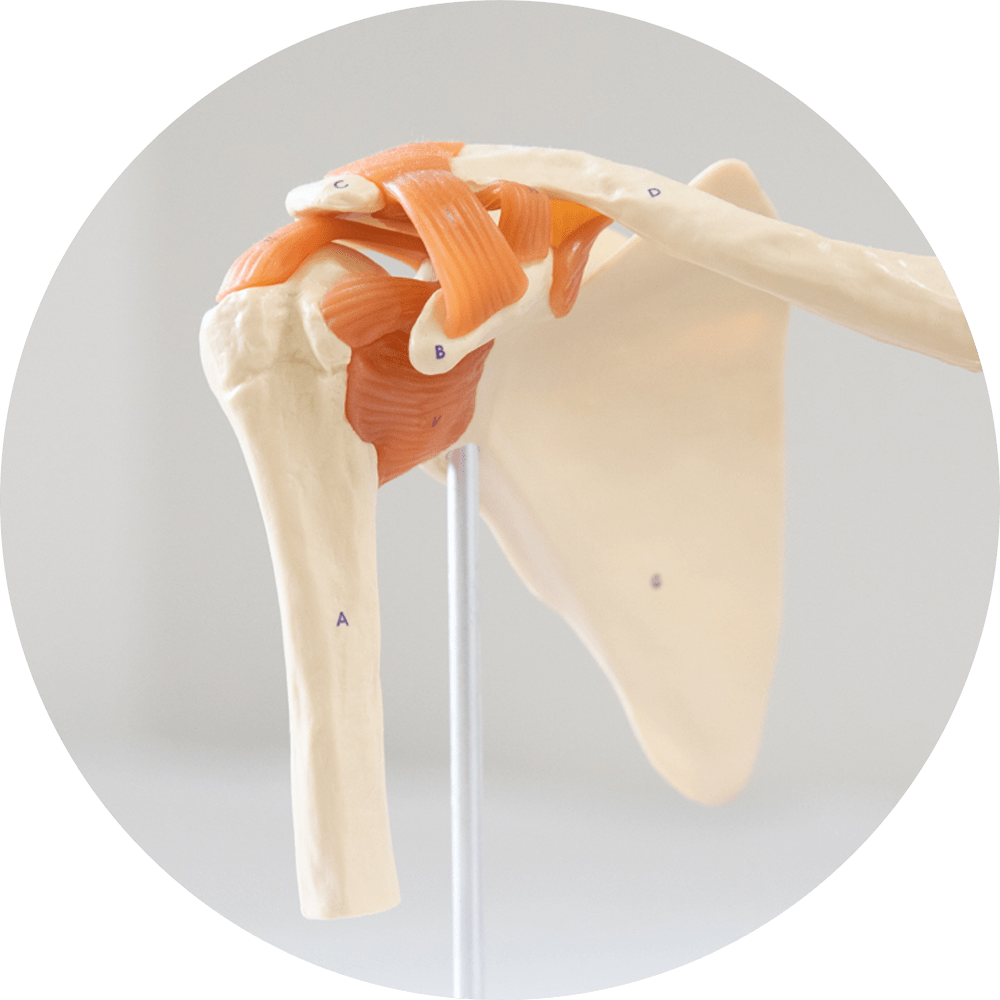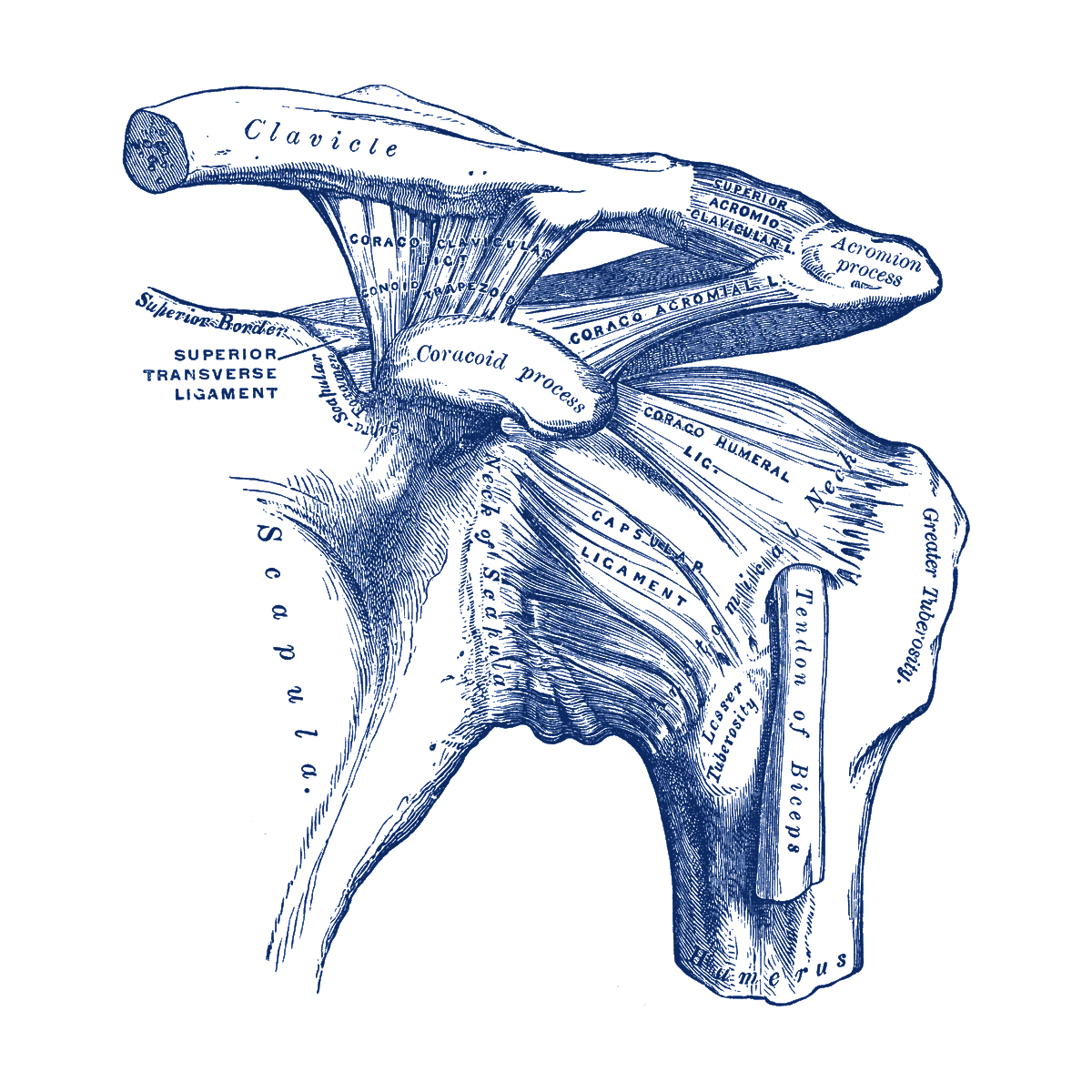There are many different treatments for fractures around the shoulder that largely depend upon the type of fracture.
Treatment terms you may hear of include: plating, intra medullary nailing and various types of shoulder replacement.

Anatomy
The shoulder is made up of three bones:
- Scapula (shoulder blade)
- Clavicle (collar bone)
- Humerus (arm bone)

These bones are joined together by soft tissues (ligaments, tendons, muscles, and joint capsule) to form a platform for the arm to work.
The shoulder is made up of three joints:
- Glenohumeral joint
- Acromioclavicular joint
- Sternoclavicular joint
Types of Shoulder Injuries
There are many types of shoulder injuries:
- Fractures are broken bones. Fractures commonly involve the clavicle (collar bone), proximal humerus (top of the upper arm bone), and scapula (shoulder blade).
- Dislocations occur when the bones on opposite sides of a joint do not line up. Dislocations can involve any of three different joints.
- A dislocation of the acromioclavicular joint (collar bone joint) is called a “separated shoulder.”
- A dislocation of the sternoclavicular joint interrupts the connection between the clavicle and the breastbone (sternum).
- The glenohumeral joint (the ball and socket joint of the shoulder) can be dislocated toward the front (anteriorly) or toward the back (posteriorly).
- Soft-tissue injuries are tears of the ligaments, tendons, muscles, and joint capsule of the shoulder, such as rotator cuff tears and labral tears.
The following discussion will focus on fractures and dislocations.
Treatment Options
-
Clavicle Fractures
Most clavicle fractures can be treated without surgery. Surgery is necessary when there is a compound fracture that has broken through the skin or the bone is severely out of place. Surgery typically involves fixing of the fracture with plates and screws or rods inside the bone. -
Proximal Humerus Fractures
Most fractures of the proximal humerus can be treated without surgery if the bone fragments are not shifted out of position (displaced). If the fragments are shifted out of position, surgery is usually required. Surgery usually involves fixation of the fracture fragments with plates, screws, or pins or it involves shoulder replacement.
-
Scapula Fractures
Most fractures of the scapula can be treated without surgery. Treatment involves immobilization with a sling or shoulder immobilizer, icing, and pain medications. The patient will be examined for additional injuries.
About 10% to 20% of scapula fractures need surgery. Fractures that need surgery usually have fracture fragments involving the shoulder joint or there is an additional fracture of the clavicle. Surgery involves fixation of the fracture fragments with plates and screws.
-
Shoulder Separations (Acromioclavicular Joint)
Treatment of shoulder separations is based on the severity of the injury as well as the direction of the separation and the physical requirements of the patient.
Less severe shoulder separations) are usually treated without surgery.
Severe separations in an upward direction or dislocations in the backward or downward directions often require surgery. Surgery involves repair of the ligaments.
Professional athletes and manual laborers are often treated with surgery, but the results are often unpredictable.
-
Shoulder Dislocations (Glenohumeral Joint)
The initial treatment of a shoulder dislocation involves reducing the dislocation (“putting it back in the socket”). This usually involves treatment in the emergency room.
The patient is given some mild sedation and pain medicine, usually through an intravenous line. Often, the physician will pull on the shoulder until the joint is realigned. Reduction is confirmed on an X-ray and the shoulder is then placed in a sling or special brace.
Additional treatment at a later date is based on the patient’s age, evidence of persistent problems with the shoulder going out of place, and the underlying associated soft-tissue injury (either to the rotator cuff or the capsulolabral complex).
Patients who are 25 years of age or younger generally require surgery. Persistent instability (repeat dislocations) of the shoulder usually requires surgery. Surgery involves repair of the torn soft tissues.
Recovery and Life After a Shoulder Injury
Life after a shoulder fracture, separation, or dislocation can be greatly affected for several weeks or even months. Most shoulder injuries whether treated surgically or nonsurgically require a period of immobilization followed by rehabilitation.
If the injury was not severe, there is fairly rapid improvement and return of function after the first 4 to 6 weeks. Shoulder exercises, usually as part of a supervised physical therapy program, are usually necessary. Exercises decrease stiffness, improve range of motion, and help the patient regain muscle strength.
Have a question or inquiry or looking for some more information about our services, get in touch and we will be happy to assist.